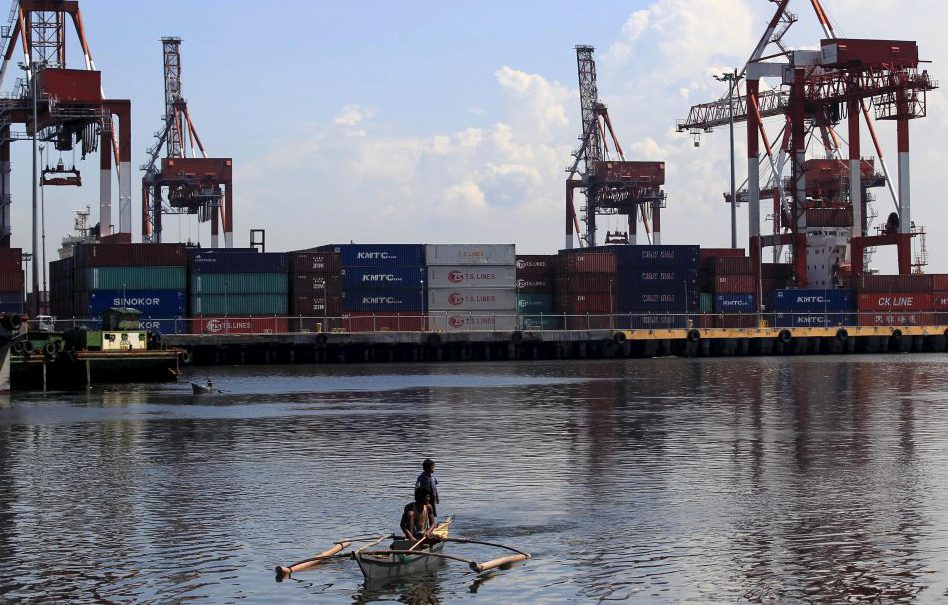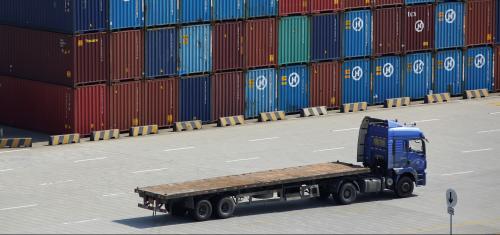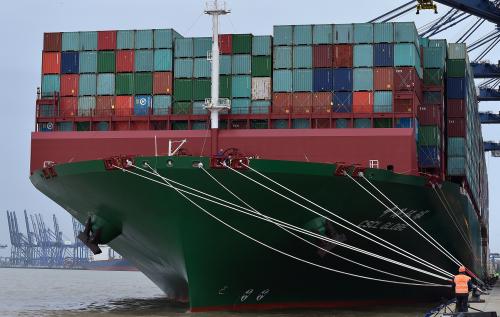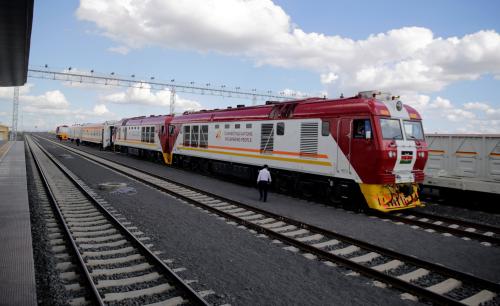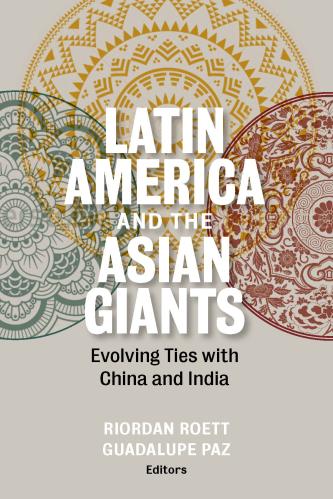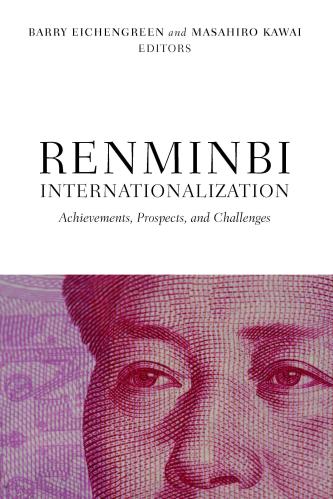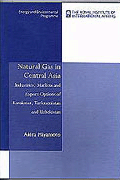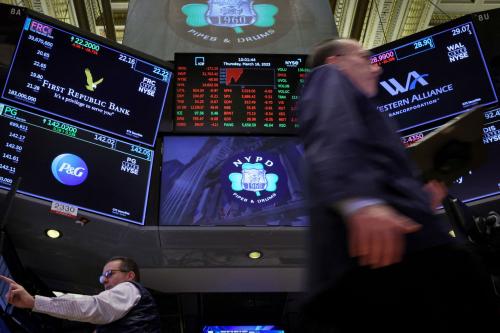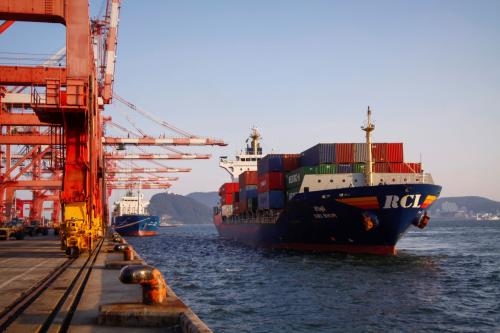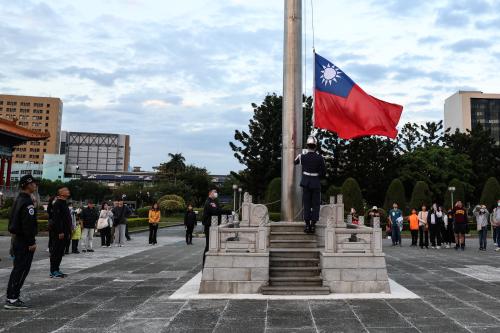This piece originally appeared in The ASAN Forum on June 19, 2017.
On May 4, the United States announced the conclusion of a US-China trade deal. There is some good news in terms of immediate new market access for US beef exports as well as commitments by China that its domestic regulatory agencies will consider providing the licenses and patents that are needed to ensure market access for US financial services and biotech products. Included in the agreement was a major concession: US recognition of the importance of China’s Belt and Road Initiative (BRI), a move that will likely be seen as signaling acceptance of one of the initiative’s underlying strategic aims—to secure a greater leadership role for China in Asia. This development comes at a time of heightened uncertainty in Asia over the US administration’s commitment to the region in light of President Donald Trump’s decision to pull it out of the Trans Pacific Partnership (TPP)—a 12-nation trade agreement.
Outcomes from the US-China Trade Agreement
The US-China trade deal is not a trade agreement in the sense this term is normally used. Unlike a free trade agreement, it is not legally binding, nor does it include a mechanism for settling disputes should either side fail to implement the agreement. On substance, the agreement only addresses limited specific market access issues. This contrasts with the comprehensive nature of US FTAs, which tend to cover close to 100 percent of trade. The deal is instead a political agreement: it addresses a subset of US-China trade issues and is an outgrowth of the 100-day plan to improve trade ties to which Trump and President Xi Jinping agreed at their April summit.
The trade agreement provides for firm deadlines to allow imports of US beef and to make regulatory decisions concerning access to China’s electronic payments market, biotech products, and ratings agencies. For its part, the United States agreed to improve China’s access to US exports of liquefied natural gas and to allow imports of cooked chicken from China.
The Belt and Road Initiative
Launched by Xi in 2013, the BRI envisions the construction of road and sea connections between China and countries in Southeast Asia, Central Asia and through to Europe. This is to be achieved with massive investment in infrastructure, including roads, rail, airports, ports, pipelines, and communications. China has committed $1.4 trillion to the initiative, which will leverage multiples of private finance to foot the bill for building and servicing the infrastructure. Credit Suisse estimates that China could invest over $500 billion into 62 BRI projects over the next 5 years. However, current Chinese overseas lending and investment continues to chase commercial returns globally instead of being focused largely on funding the BRI projects.1
Once completed, the BRI could cover over 4.4 billion people and generate a Gross Domestic Product of over $21 trillion.2
The Reasons for Belt and Road Initiative
The national significance of BRI needs to be understood in the context of changes in China’s foreign policy orientation. In particular, Xi’s articulation of the “China Dream” is of a rejuvenated nation that is internally prosperous as well as more internationally engaged. In this respect, Xi’s drive appears to be supplanting Deng Xiaoping’s maxim that the country should bide its time and maintain a low profile with a more explicitly outward looking foreign policy, which, in ambition at least, seeks to reflect China’s view of itself as becoming Asia’s dominant power.3
The BRI encompasses several strategic and economic goals. One is to use infrastructure as a means of projecting and building regional influence. Building infrastructure at scale is something that China has demonstrated it can do. Infrastructure megaprojects, whether at home or overseas, create strong visual statements that support a narrative of economic progress.
Such a focus can also help address global infrastructure needs and tackle the need for sustainable infrastructure as part of the drive to address climate change.4BRI is also an important part of Chinese trade and investment initiatives that seek to advance regional economic integration and promote greater economic reliance on China.5BRI infrastructure will create more efficient trade links within China and throughout Asia. Its projects can also be used to export Chinese standards—such as for high-speed rail, which could further lock in preferences for Chinese exports in the region.
The impact of BRI on regional trade integration should also be seen in light of trade agreements such as the Regional Comprehensive Economic Partnership Agreement (RCEP) involving the ASEAN + 6 countries (China, Japan, South Korea, India, Australia, New Zealand). Once completed, RCEP will also provide preferential access to each country’s markets. BRI could help China address some of its excess capacity in industries such as steel and cement, since infrastructure projects supported by the initiative would boost external demand for Chinese exports. The initiative could provide a means for Chinese industries with excess capacity to export equipment that is currently idle. From this perspective, BRI is in part a response to the structural challenges that afflict China’s growth model—reliance on state-owned enterprise (SOEs) and state subsidized finance that has led to over-investment and an undeveloped services sector.6 In this regard, BRI allows China to double-down on its growth model by finding new markets where it can continue doing more of the same—building infrastructure using SOEs and state finance. In this way, BRI risks exporting the weaknesses in China’s economic growth model throughout the region.
That BRI is both a political and economic agenda of Xi means that some infrastructure projects may lack a strong economic rationale. However, it would be wrong to assume that BRI will necessarily fail due to a lack of commercial logic. Xi’s commitment means that, for the foreseeable future, it will move forward. China’s use of SOEs and state banks such as the China Development Bank means that the state can absorb these losses—likely justified as the cost of achieving BRI’s longer term economic and strategic goals.7 However, Moody’s recent downgrading of China’s credit rating highlights systemic risks for China with respect to further credit growth, particularly if directed for political reasons into non-performing loans for BRI projects.
Some projects will also support China’s ability to project military strength in the region. For instance, the development of the Port of Gwadar in Pakistan will give China access to the Indian Ocean for commercial purposes and could serve as a deep-water port for its navy.
Whatever the final outcome of BRI, the initiative is already having an impact on the evolving narratives in Asia regarding the respective roles of China and the United States. BRI provides scope for win-win outcomes by addressing infrastructure gaps, improving trade flows, and spurring economic growth, from all of which US businesses may potentially benefit. Yet, there is also a fundamental competitive tension around the question of whether China or the United States will ultimately determine the rules for trade and investment in the region.
One Belt One Road in the Absence of US Participation in TPP
Supported by President G.W. Bush and finalized by President Obama, TPP formed a core part of America’s effort to update and expand rules for trade and investment in the Asia-Pacific. Trump withdrew the United States from TPP on his first day in office. The Obama administration made clear that the goals for it were to expand trade and investment with countries in the Asia-Pacific and to develop regional rules centered around US leadership.8 A TPP inclusive of the United States would have buttressed America’s broader diplomatic and military rebalancing towards Asia by supporting the economic development of allies and reaffirming America’s commitment to the region. And the impact of the TPP would have been magnified as more countries joined.
In important respects, a TPP that included the United States would have supported countries in the region that want to ensure that BRI happens in ways that minimize economic risks and limit its strategic heft. For instance, even in the absence of China’s participation in TPP, the agreements’ rules disciplining how SOEs compete domestically and overseas created a legal baseline that countries such as Vietnam and Malaysia could have applied to Chinese SOEs as they invested in BRI projects.
Moreover, by providing preferential access to the US market, the TPP offered the prospect of stabilizing and potentially growing these countries’ trade with the United States, where China had in recent years become their number one market. Providing these countries with another avenue for growth in trade and investment would have created more strategic space for TPP parties to push back and demand that BRI projects only proceed in ways consistent with their best interests. Instead, while BRI was in part China’s response to the TPP, following Trump’s withdrawal, it has become a key initiative for expanding China’s trade and investment across the region.
Having withdrawn from TPP, the US administration has failed to articulate a trade and investment agenda for Asia that can compare to the TPP or China’s ambition for BRI. Its Asia trade policy has now been reduced to a possible bilateral FTA with Japan, which, even if it gets off the ground, will take years to conclude and will have none of the regional rule building and norm setting characteristics of the TPP.
Conclusion
Trump’s TPP pullout has significant economic and strategic consequences for the United States, none of which are good. It is an own goal that is more consistent with “US last” than Trump’s “US first” claims. The decision by the administration to recognize the BRI in the US-China trade agreement would, in the presence of TPP, have been a pragmatic move to make space for a personal initiative of Xi, recognizing the win-win nature of the trade liberalization brought about by TPP and BRI’s goals of investing in needed infrastructure. With TPP on shaky ground at best, this recognition of BRI compounds the uncertainty in Asia caused by the US withdrawal and raises further questions about US economic and strategic goals for the region.
-
Footnotes
- David Dollar, “Yes, China is investing globally – but not so much in its one belt one road initiative”, Brookings Order from Chaos Blog, May 8, 2017.
- Executive Summary from the Inaugural Belt and Road Summit, Hong Kong, 18 May 2016.
- Christopher K. Johnson, “President Xi Jinping’s “Belt and Road” Initiative”, CSIS Report, March 2016, 16.
- Bhattacharya et al (2016), “Delivering on Sustainable Infrastructure for better development and better climate,” Brookings 2016.
- Bonnie S. Glaser, “China’s Grand Strategy in Asia”, Statement before the U.S.-China Economic and Security Review Commission, March 13, 2014.
- Dorrucci E. et al (2013), “China’s Economic Growth and Rebalance”, European Central Bank Occasional Paper Series, no. 142, February 2013.
- Julian Sneden, “Will One Belt One Road pay off? The Lowy Institute, May 2016.
- Gerald F. Seib, “Obama Presses Case for Asia Trade Deal, Warns Failure Would Benefit China,” The Wall Street Journal, April 27, 2015, https://www.wsj.com/articles/obama-presses-case-for-asia-trade-deal-warns-failure-would-benefit-china-1430160415

